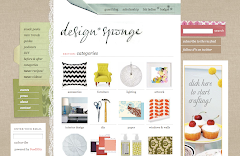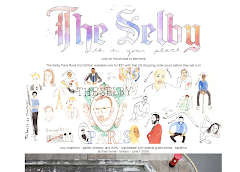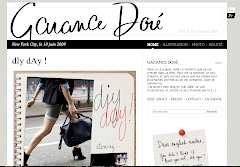
There is a never ending cycle of the influences fashion can have on society and one of them is body image. Whilst there are elements of fantasy and aspiration with fashion (who doesn't love a stunning perfume campaign or an amazing 12 page spread in Vogue Italia?) there is also a major responsibility that comes with pumping out these types of aspirational images.
LMFF hosted a forum for the fashion industry on Monday 31 May at ACMI called "Fashion that Fits" attempting to tackle an issue that is so intrinsically linked to the fashion world. On hand to discuss the various commercial, mental, physical and moral issues surrounding this were:
Gorgi Coghlan from The Circle on Channel 10 as MC
Honorable James Merlino - Minister of Sport, Recreation & Youth Affairs
Sarah Oakes - Editor of Cleo Magazine
Matthew Anderson - Director Chadwicks Modelling Agency
Dr Naomi Carfti - Community development / Education officer of Eating Disorders Foundation of Victoria
Prue Thomas - Strategic Brand Manager of Sportsgirl
Karen Webster - Outgoing LMFF Festival Director
Indeed this panel was a well curated and diverse bunch who could discuss from their own point of view the various implications of body image in their pocket of the industry. Some of issues raised were:
1. Language & Labels - ensuring communication around Small, Medium & Large rather than Skinny, Size Zero, Plus Size and Big. "We never talk minus size, we just talk plus size and its wrong" says Karen Webster.
2. Healthy Vs UnHealthy - overweight and underweight individuals can still be considered "healthy", even if they are overweight or underweight. So the term healthy and unhealthy were more relevant terms to be using. However, how does a person looking at a photoshoot or catwalk know if the model is healthy or unhealthy based only on their appearance?
3. Cover models for Magazines - Sarah spoke of her boredom at seeing another American celebrity on a Cleo cover, however the Kate Hudson's and Gwyneth Paltrow's of the world were more popular issues that sold better than when local talents like Isabel Lucas and Jen Hawkins were featured on the cover. So inadvertently, the consumer is dictating which women we see over and over again on our covers pushing this impossible idea of perfection.
4. Education - Dr Crafti spoke about how education surrounding what and who is attractive needs to start younger so that teenagers can differentiate between a photoshopped image on a magazine and the reality of their own images and lives.
5. Fantasy Vs Reality - Matthew from Chadwicks explained that he felt there was a need and a place for "fantasy" and "aspiration" with the fashion industry and that "People don't buy magazines to see average".
6. Sizing - Prue from Sportsgirl talked about their role with introducing a full size range (size 6-16) in order to cater for petite and curveaous girls and how they encourage their sales staff to find the most appropriate size to suit and flatter for the best overall look, rather than being size-ist!
7. Casting healthy models - Karen explained they had used a nutrionist for the recent LMFF 2010 catwalk shows during casting so that they ensured they were being responsible with their choices.
From my point of view as a girl who has grown into a woman and all whilst firmly entrenched in the fashion industry, this is an incredibly complex issue that won't be solved overnight. There is a certain amount of brainwashing with media images (magazines, catwalks, online, billboards, TV etc) that do deliver elements of fantasy that have been years in the making. The rise in popularity of reality TV and social media where our photo's are constantly posted on the web, mean we are all so much more conscious of our image and critical as well. Then there is the increase in the "Search for a Supermodel" "Australia's next top model" and so forth where the girls are often asked to lose weight to compete internationally. All of these shows are top rating winners and contribute to the cycle of putting "unrealistic" models on a pedestal and it is only as a woman gets older that she can really discriminate that 95% of society are not in this category. Jump on public transport any day of the week and you'll see 95% of commuters are normal and trying to look the best they can for their size, culture, body shape, health and budget.
So where does that leave us? Do we throw our hands in the air in despair? Quite the contrary - everything starts with a small step. Suggestions made on the night include:
1. A state wide or nation wide "I love my body" day where we encourage positivity with our bodies.
2. kikki.K were talking about putting a "Gratitude" Journal out specifically for this in relation to being thankful you can use your body from a functional point of view when so many suffer from health issues and to be thankful for small compliments.
3. Encouraging more magazine articles about self love, image vs reality and body size in the real world.
4. Depicting what is Healthy weight Vs Under and Overweight from a fashion point of view
5. Developing a new language
6. Casting models for catwalk that truly represent diversity from cultural, shape and size points of view moving forward
7. Reducing the amount of photoshopped images that hit our advertising overloaded society
Some examples I can think of from commercial Australian retail brands supporting this theory are:
* Supre (who up until very recently) used shop girls and "normal" looking girls to model in their campaigns. It's a shame they've just switched to using models as this really differentiated them from the masses and sent out positive body messages.
* Sportsgirl who use healthy looking models in their campaigns that aren't waifs
* Jeanswest who cater for all body shapes with their "Speciality denim range" featuring petites, maternity, tummy trimmer, buttlifter, curve embracer and tall
I'd love to hear of suggestions from the iSpyStyle readers who have thoughts or ideas about what we could do from an industry point of view to decrease the amount of body image issues. There's some fantastic feedback, information and help on the Eating Disorders Foundation of Victoria website of which Dr Naomi Crafti came to represent during the forum.



















No comments:
Post a Comment